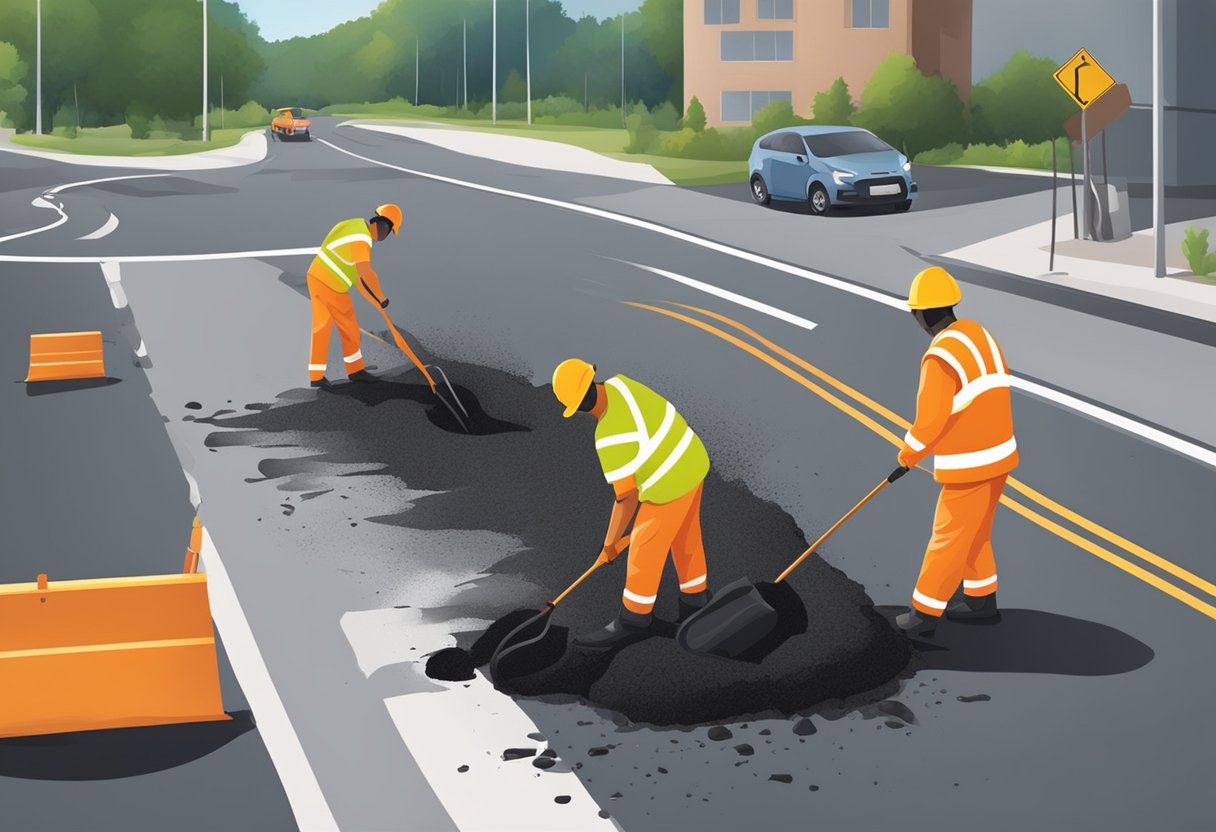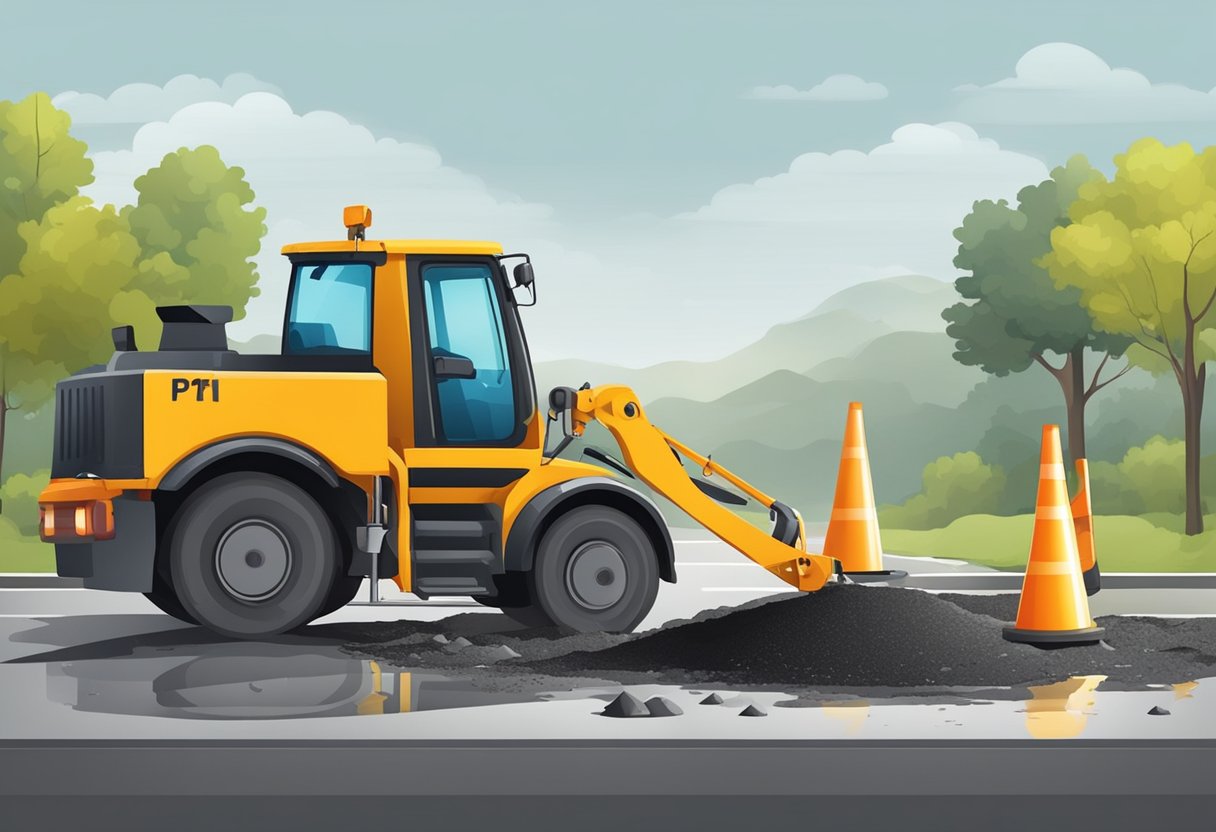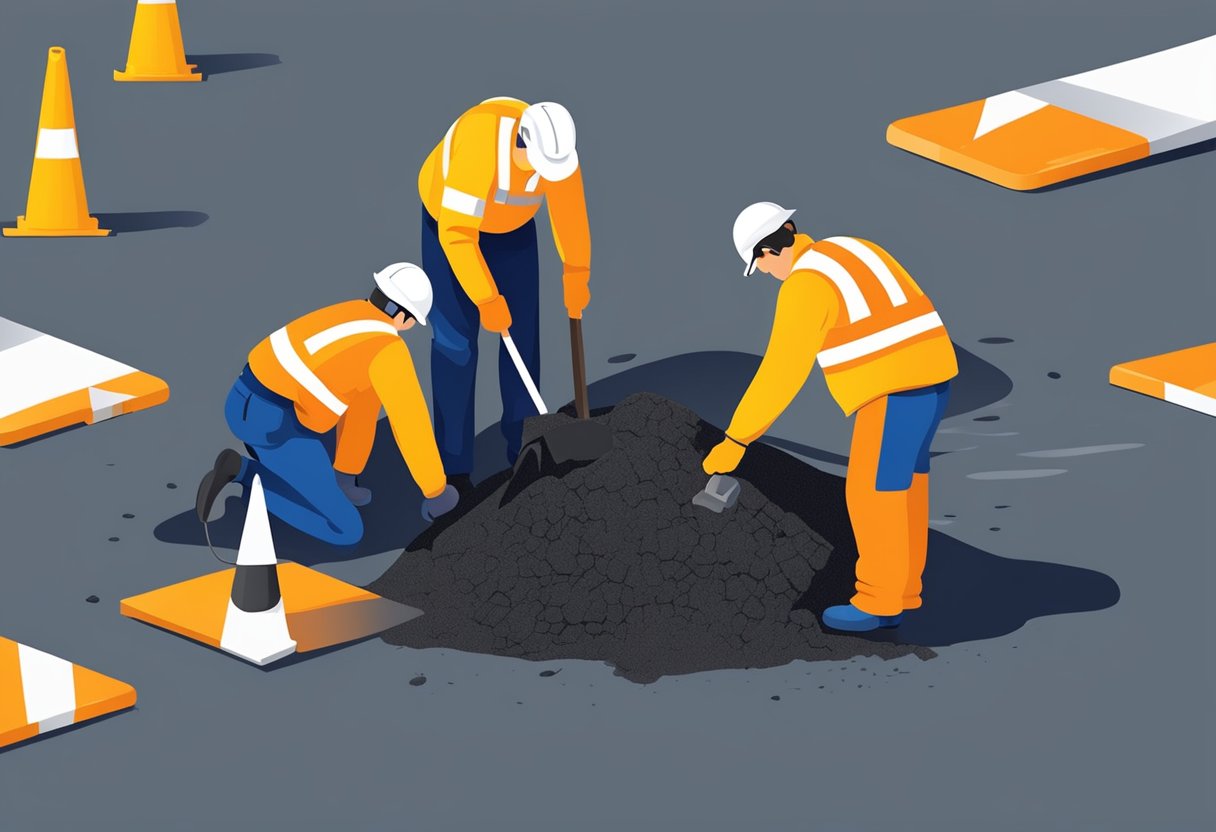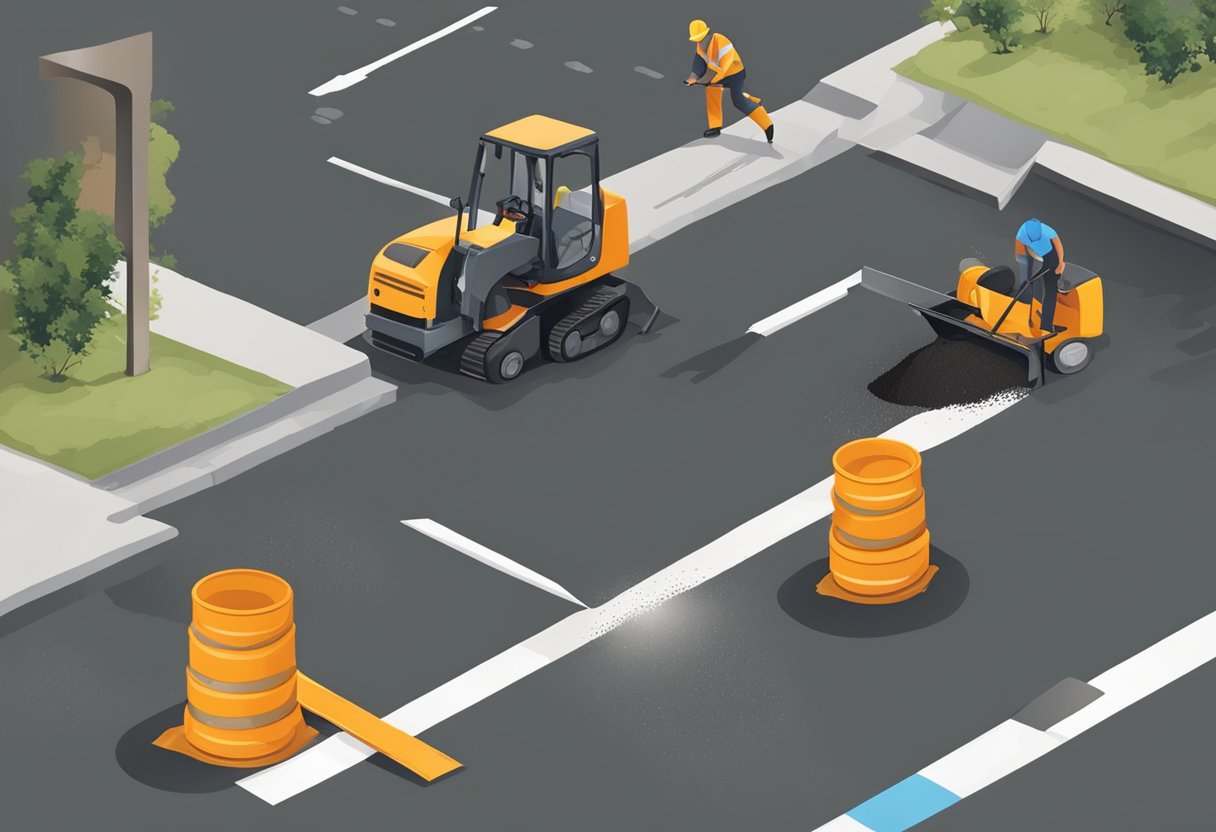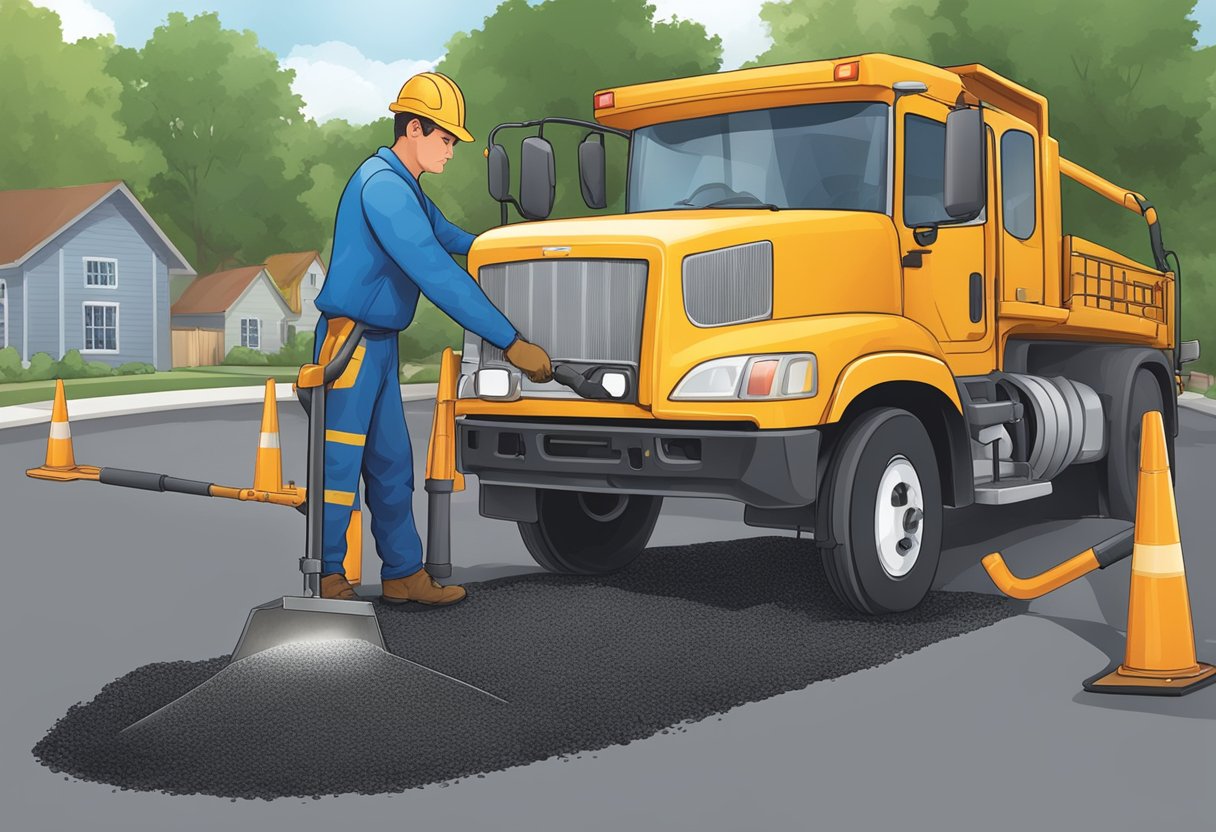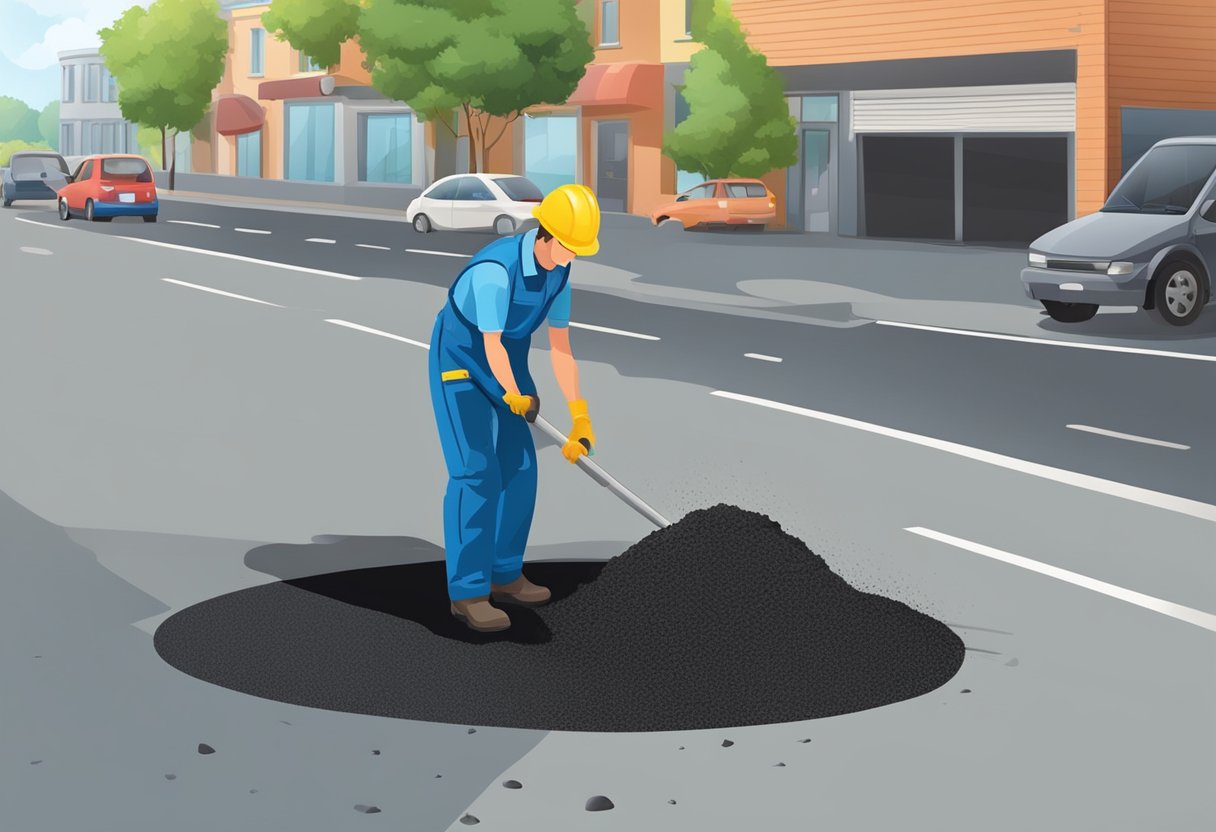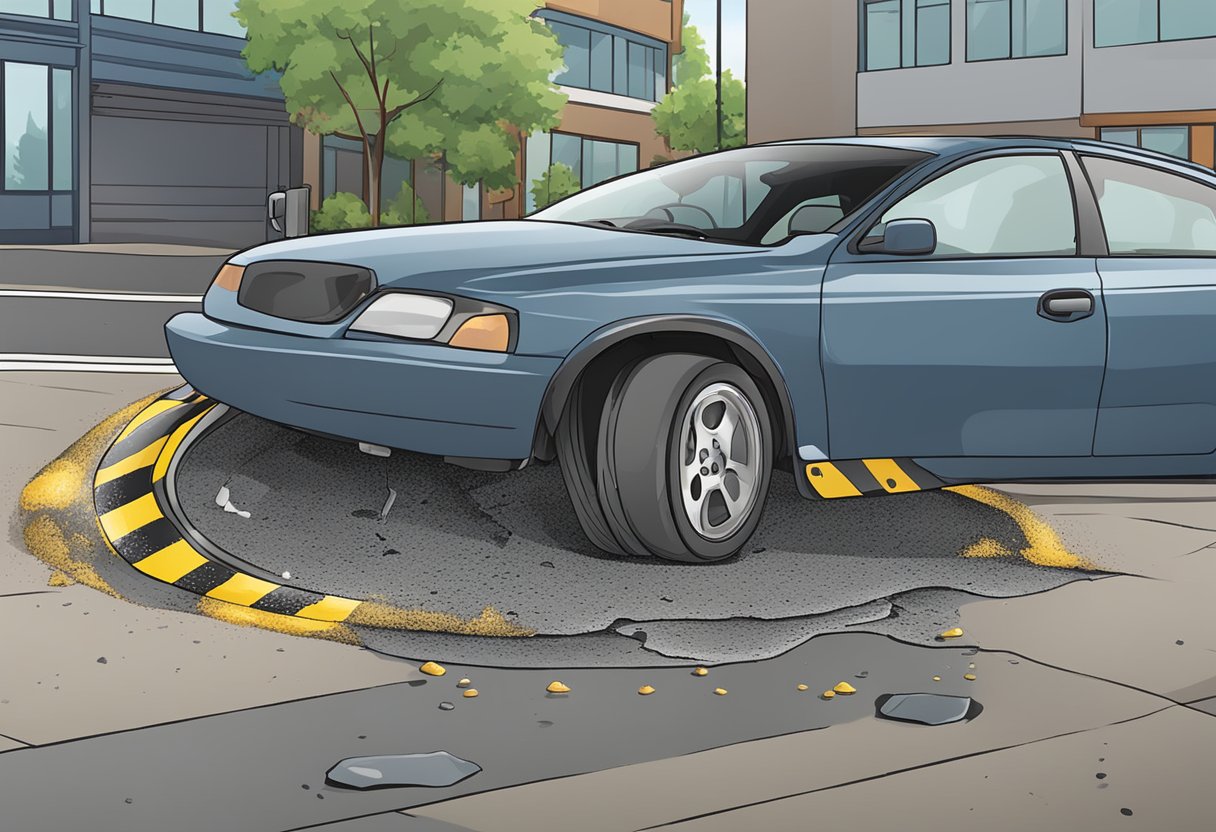Asphalt Pothole Repair: Effective Solutions for Road Maintenance
Asphalt pothole repair is a crucial aspect of maintaining roads and parking lots, ensuring their longevity and safety for all users. Potholes, those pesky imperfections that occur on paved surfaces, can lead to vehicle damage, accidents, and increased maintenance costs. With the right tools and techniques, addressing these issues promptly can extend the lifespan of the asphalt and save budget in the long run.
A repair project typically begins with a thorough assessment of the affected area to determine the severity and extent of the damage. Once the scope of the problem is understood, professionals can employ various methods, such as patching or resurfacing, to return the road to optimal condition. It’s essential to select the appropriate approach for each unique case to ensure a long-lasting and effective solution.
The process might seem straightforward; however, understanding the root causes behind the appearance of potholes and the materials used is essential. By diving deeper into the cause of potholes and recognizing the importance of timely repairs, we can better appreciate the value of expert services, such as the professionals found on the About Us page. Their experience in the field contributes to improved asphalt conditions and safer roads for everyone.
Understanding Asphalt and Potholes
Asphalt is a popular choice for road surfaces because of its durability, flexibility, and cost-effectiveness. Made from a combination of aggregates, such as crushed rock and sand, bound together by a bitumen binder, asphalt provides a smooth and stable surface for vehicles. However, over time, exposure to varying weather conditions and heavy traffic can lead to the formation of potholes.
Potholes are a common problem in road maintenance, primarily caused by the freeze-thaw cycle that occurs during colder months. As temperatures fluctuate, water trapped beneath the asphalt surface expands and contracts, weakening the asphalt and creating small cracks. These cracks can then grow into larger holes, known as potholes.
Road maintenance plays a crucial role in preventing and fixing potholes to ensure road safety and longevity. Regular inspection and timely repair of small cracks can help avoid the formation of large potholes. Asphalt repair techniques, such as the ones provided by A+ Asphalt Repair in College Station, can help address these issues by providing a cost-effective solution for maintaining the quality and functionality of the road surface.
The expertise of concrete contractors can also be beneficial in road maintenance, as they possess the knowledge and skills required to design effective repair plans. These professionals can provide valuable insights into potential enhancements for the asphalt road surface, ensuring a smooth and safe riding experience for drivers.
In addition to road surfaces, asphalt is commonly used in the construction of parking lots. Quality parking lot paving can substantially increase the property value and improve user experience, and proper maintenance is critical to preserving the integrity of the surface.
In conclusion, understanding asphalt and the formation of potholes is essential for appropriate road maintenance. Taking preventive measures and investing in timely repairs can substantially extend the lifespan of asphalt surfaces while improving road safety and driving conditions for all users.
Pothole Causes and Prevention
Potholes are a common problem on roads and can cause damage to vehicles, accidents, and compromised road safety. They are formed due to a combination of factors, such as cracks, holes, weathering, and road construction quality.
Cracks in the asphalt can be caused by various factors like the natural aging process, exposure to UV rays, and a freeze-thaw cycle. As water seeps into these cracks and freezes, it expands and further weakens the asphalt. This process is exacerbated by the continuous pressure from traffic, causing holes to form eventually.
Another factor that contributes to pothole formation is weathering. Over time, the continuous exposure to harsh weather conditions and temperature fluctuations can degrade the asphalt quality, resulting in surface damage and the development of potholes.
Quality of road construction plays a crucial role in preventing potholes. Properly constructed roads have a sufficient base and binder layers, ensuring that the asphalt remains flexible and resistant to temperature cycles. On the other hand, poor quality construction can lead to inadequate drainage, which increases the risk of potholes forming due to the constant presence of water.
Prevention of potholes primarily involves regular maintenance and monitoring of the road surfaces. This includes sealing cracks using filling materials such as Pothole Patching with Hot / Cold Mixtures, which provide a temporary solution for smaller potholes. Proper drainage systems should also be implemented to prevent water accumulation and reduce the risk of freeze-thaw cycles.
In conclusion, understanding the causes of potholes and taking preventive measures can significantly prolong the lifespan of asphalt roads and maintain road safety for all users. Regular maintenance and the use of appropriate materials are essential to mitigate pothole formation and improve overall road conditions.
Asphalt Repair Materials
When it comes to repairing potholes and other asphalt surface damages, there are various repair materials available. A popular choice for pothole repair is hot mix asphalt. This type of asphalt mix combines heated asphalt cement with heated aggregates, providing a durable and long-lasting repair solution.
Another option for pothole repair is cold mix asphalt. This material is made by blending unheated asphalt cement with unheated aggregates. Cold mix asphalt is an economical alternative to hot mix asphalt, and it can be used in all weather conditions. However, it is usually considered a temporary fix, as it may not provide the same level of durability as hot mix asphalt.
In addition to the traditional hot and cold mix asphalt, there are also several specialized repair materials available. Some of these materials include:
- Recycled asphalt millings: This material, also known as crushed asphalt, is created from reclaimed asphalt pavement. It could be an environmentally friendly option for repairing asphalt surfaces, as it reduces waste and repurposes existing materials.
- High-performance patching materials: These are specially formulated asphalt mixes designed for rapid repairs, improved durability, and increased resistance to moisture and harsh weather conditions.
When selecting the appropriate repair material, it’s essential to consider factors such as traffic volume, weather conditions, and the extent of the damage. For minor damages or temporary repairs, cold mix asphalt may be suitable. However, for high-traffic areas or more extensive damages, hot mix asphalt or a specialized repair material might be the better option.
To ensure the best results, it’s essential to consult with asphalt services professionals experienced in repairing and maintaining asphalt surfaces. They can help identify the most suitable repair materials and provide guidance on proper application techniques for a long-lasting and effective repair treatment.
Tools Needed for Pothole Repair
Pothole repair is a necessary task to maintain the integrity and safety of any asphalt surface. To ensure a proper repair, having the right tools is essential. The following paragraphs discuss the primary tools needed for effective pothole repair.
First and foremost, a shovel is a fundamental tool for this task. It helps remove loose debris and broken asphalt bits from the pothole and enables the even distribution of the repair material. A square-edged shovel is recommended as it allows for better precision and control when working with both the damaged area and the repair materials.
Another vital tool for pothole repair is a broom. It is used to sweep away any remaining dirt and loose particles after the initial shoveling. A clean surface ensures better adhesion and increases the longevity of the repair. A stiff-bristled broom or a wire brush is ideal for this purpose since they effectively remove stubborn dirt and debris.
A propane torch is useful for drying and heating the area surrounding the pothole. This step is particularly crucial in cold or wet conditions, as it helps evaporate moisture and improve the bond between the existing asphalt and repair material. Propane torches also allow for faster melting of the filler material. However, be cautious not to overheat the surrounding asphalt, as it might cause additional damage.
Finally, a tamper is necessary for compacting and stabilizing the repair material within the pothole. Hand tampers are suitable for smaller repairs, while plate compactors work best for larger areas. Proper compaction ensures a solid base for the repaired patch, preventing premature failure and extending its lifespan.
In summary, having the appropriate tools is crucial for successful pothole repair. Shovels, brooms, propane torches, and tampers are indispensable for preparing the pothole, applying the material, and ensuring its proper compaction. Equipped with these tools, one can confidently and effectively repair potholes in asphalt surfaces.
The Process of Repairing Potholes
Repairing potholes is a crucial task for maintaining safe and functional roads. The process begins by identifying the damaged area and clearing any debris, such as dirt and loose asphalt. The objective is to have a clean and solid surface to apply the patching material.
The next step involves applying a tack coat on the cleaned surface. This coat helps the patching material adhere better to the existing asphalt. It is essential to choose the right patching material, as the wrong mix could lead to the repaired area not lasting long.
After applying the patching material, it is necessary to compact it properly using a compaction machine or a hand tamper. Compacting the patching material is a crucial step as it ensures a smooth, leveled surface and prevents any water infiltration, which can lead to further damage.
Performing regular maintenance checks and timely repairs can prolong the life of asphalt surfaces, ensuring they remain safe and functional for the users.
Repair Techniques for Different Types of Potholes
Potholes in asphalt can range from hairline cracks to large depressions, and each requires a different repair technique. For hairline cracks, it’s essential to address them early on before they develop into larger issues. A common repair method involves using crack sealant, which fills the cracks and prevents water infiltration. This helps in prolonging the lifespan of the asphalt and maintaining its integrity.
As small cracks widen and deepen, they may require more advanced methods for repair. One such approach is the Driveway Crack Repair In Texas method, which involves designing a detailed plan using knowledge and skills to ensure the repair is done correctly. In addition to using crack sealant, this technique may require the removal of damaged material and replacing it with new asphalt.
Depressions in asphalt surfaces are slightly different from small cracks, as they are often characterized by low spots or sinking areas. These depressions can lead to water pooling and deteriorate the surface over time. To repair depressions, the affected area is usually milled or ground down before a new layer of asphalt is applied. This ensures that the repair is even and leveled with the surrounding surface.
When it comes to large potholes, they require more comprehensive repair methods due to their size and the damage they can cause to vehicles and infrastructure. The most common technique involves a process called “throw and go,” in which loose asphalt is placed into the hole and compacted to create a temporary fix. For a more permanent solution, a technique called “full-depth patching” is preferred. This method entails removing the damaged asphalt, cleaning the area, and applying new asphalt mix to fill the hole. This ensures a long-lasting and effective repair.
Each of these repair techniques is tailored to address the specific type of pothole encountered. It’s crucial to assess the damage accurately and select the appropriate method to achieve effective and long-lasting results.
Maintaining the Durability of Repaired Potholes
To ensure the longevity of repaired potholes, it is crucial to select a suitable pothole repair method that factors in the surrounding environment and conditions. For instance, choosing a permanent pothole repair solution can help maintain the integrity of the asphalt driveway longer, reducing the need for frequent repairs.
One of the most effective ways to maintain the durability of a repaired pothole is through asphalt preventative maintenance. This approach allows for the early detection of potential problem areas in the pavement, helping to prevent further damage and extend its lifespan. Preventative maintenance measures, such as regular sealcoating and crack filling, can help protect the asphalt surface from harsh weather conditions and heavy vehicle traffic.
Proper drainage is another essential aspect of maintaining pothole durability. Water penetration into the underlying layers of the asphalt can substantially weaken it, leading to further deterioration. Ensure that the repaired area is appropriately sloped and adequately connected to the existing drainage system to prevent water accumulation.
Finally, choosing high-quality materials for the repair process will contribute significantly to extending the life of asphalt surfaces. Using a durable asphalt mix and adhering to the manufacturer’s recommendations for installation will result in a stronger, longer-lasting repair. It is also recommended that you work with experienced professionals when repairing potholes, as their expertise can help minimize the chances of future issues.
Taking these steps to maintain the durability of repaired potholes will greatly contribute to the overall longevity of your asphalt driveway or surface while ensuring smooth, safe driving conditions.
Conclusion
Asphalt pothole repair is a crucial process in maintaining the longevity and safety of roads. Choosing the right materials and methods for repair can significantly impact the effectiveness of the process. Concrete is an alternative option, but it can be costly compared to asphalt.
Pothole repair costs can vary depending on several factors like the size, location, and frequency of pothole formation. Timely and efficient repairs help to minimize damage to vehicles and improve road conditions. Ultimately, investing in proper maintenance and pothole repair keeps roads safe and functional for all users.
Frequently Asked Questions
How can potholes in asphalt driveways be fixed permanently?
To fix potholes permanently in asphalt driveways, it’s essential to follow a proper procedure. Start by cleaning the hole of any debris and water. Then, apply a tack coat on the sides of the hole for better adhesion. Use a high-quality asphalt mix for filling the pothole, and compact it using a vibrating plate compactor or hand tamper. Finish by sealing the edges with an asphalt sealer to prevent water penetration.
What is the most effective material for filling potholes?
The most effective material for filling potholes depends on the type and size of the hole. Cold patch asphalt is a popular choice for small to medium-sized potholes, while hot-mix asphalt is often used for larger or heavily trafficked areas. For more severe cases, a full-depth patch or reconstruction might be required.
Can you repair a hole in asphalt using a DIY method?
Yes, repairing a hole in asphalt using a DIY method is possible. You can purchase cold patch asphalt from a local home improvement store, follow the manufacturer’s instructions, and use basic tools like a shovel, broom, and tamper. However, for more extensive or high-traffic areas, professional assistance may be necessary for longer-lasting results.
What is the most cost-efficient method for pothole repair?
The most cost-efficient method for pothole repair depends on the extent of the damage and the size of the area. Cold patch asphalt is a cost-effective and easy-to-use option for smaller potholes. For larger or more complex repairs, investing in professional services or using hot-mix asphalt may be more cost-effective in the long run by providing a longer-lasting repair.
How do you repair potholes in a concrete driveway?
To repair potholes in a concrete driveway, begin by removing loose debris and cleaning the area. Apply a concrete bonding adhesive, and then fill the hole with a concrete mix, tamping it down as you go. Smooth the surface with a trowel, and let the repair cure for the recommended time before using the driveway again.
Are there any specific temperature recommendations for blacktop repair products?
Temperature recommendations vary by product, but in general, asphalt repair products should be used when temperatures are above 50°F (10°C). Cold patch asphalt can be applied at lower temperatures, but its effectiveness may be reduced. Hot-mix asphalt requires higher temperatures for proper installation and compaction. Always follow the manufacturer’s guidelines for the specific product you are using.


